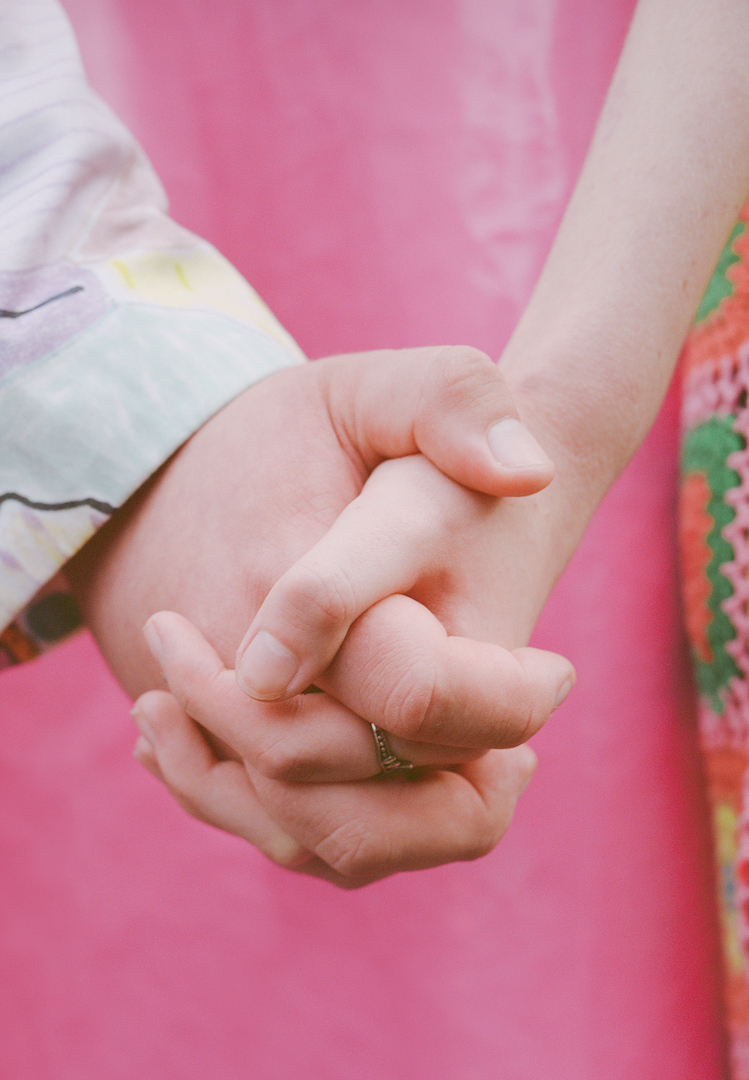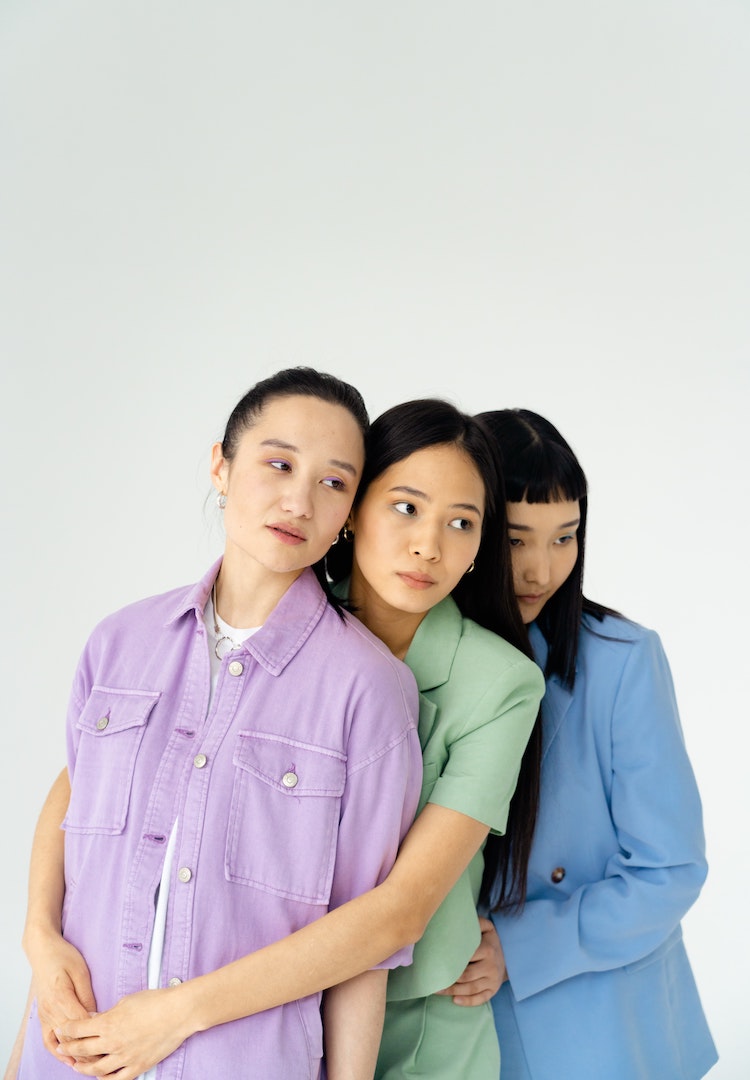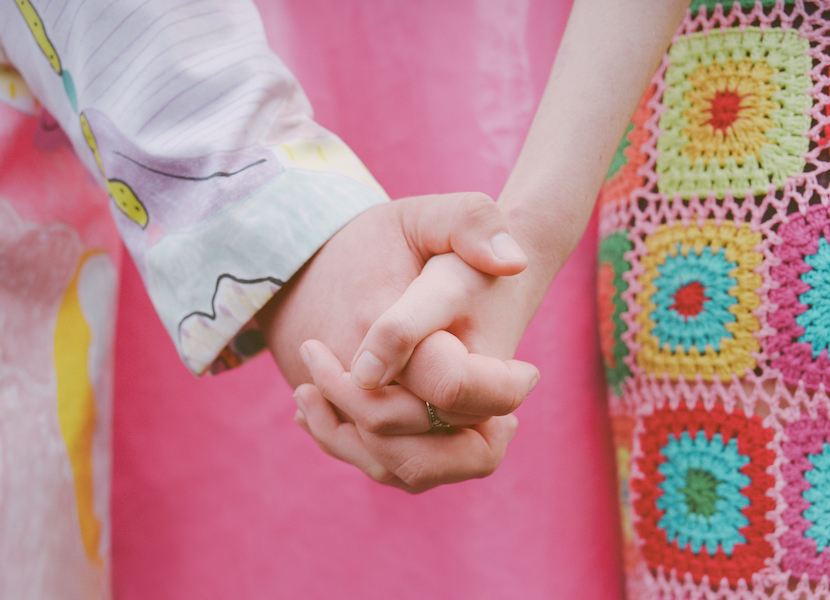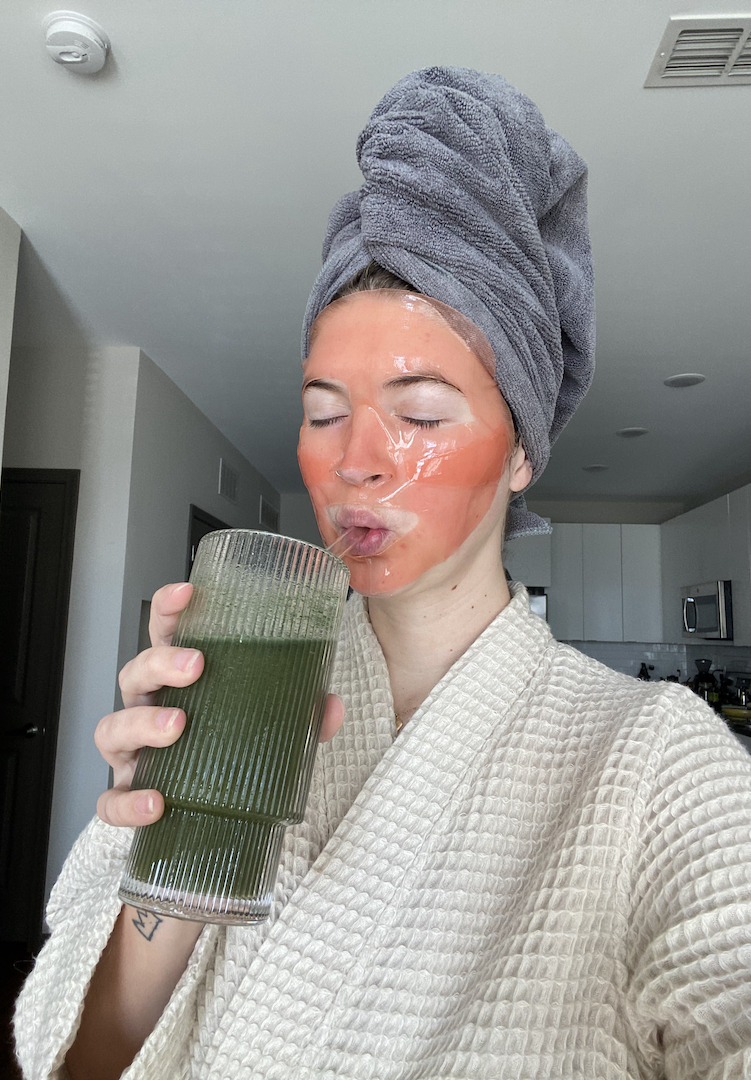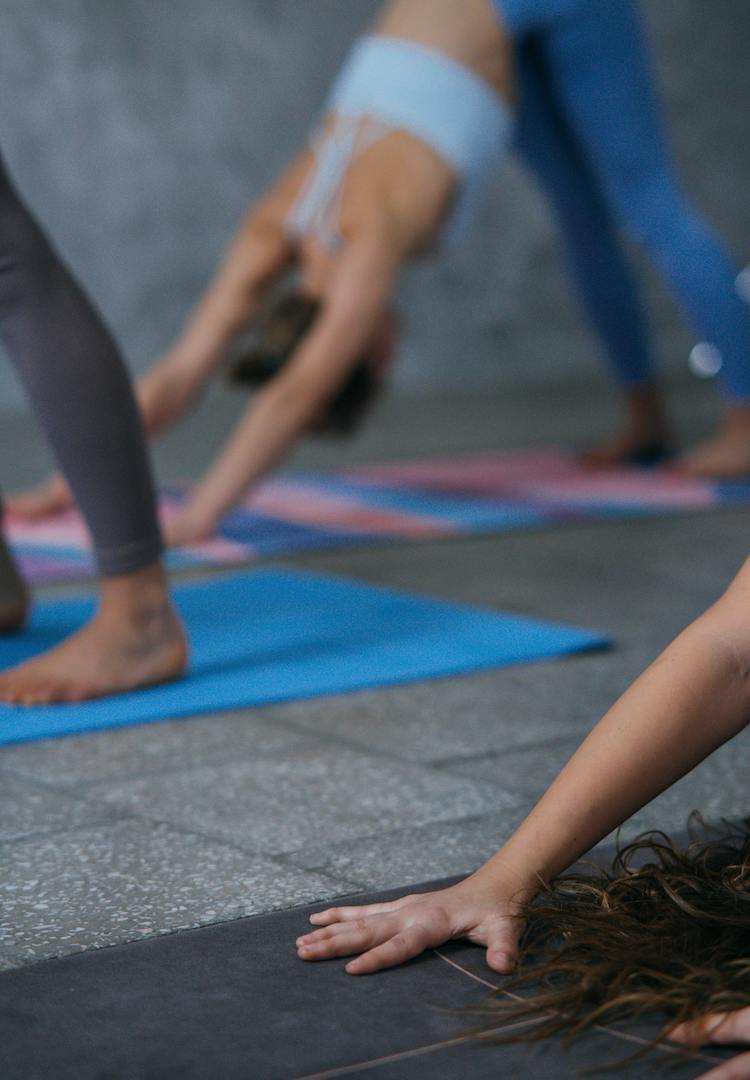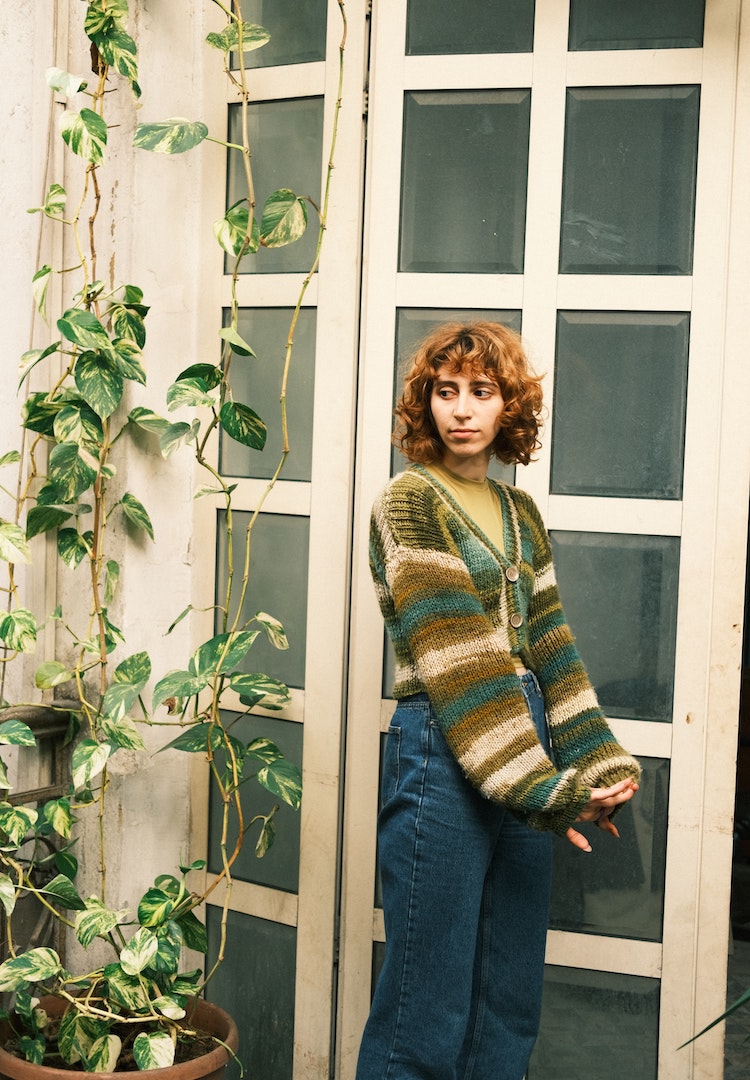My gender changed, and I’m finally okay with that
IN PARTNERSHIP WITH CONVERSE
PHOTOGRAPHY BY ISABELLA CONNELLEY
STYLING BY CARLOS MANGUBAT
Oisin wears Erik Yvon blazer, Ed wears Erik Yvon jacket and Theresa wears the stylist’s own Two-piece set
WORDS BY RIMU BHOOI
“I know that who I am isn’t defined by my clothes or haircut, but I now choose to wear whatever I want on any given day because it’s what I want.”
Content warning: Mentions of transphobia.
This Pride Month, in partnership with Converse, Fashion Journal is welcoming a queer guest editor from the Converse All Star community to guide our storytelling in support of queer voices. Rimu Bhooi is a queer, non-binary, disabled Indian of Punjabi Sikh descent, working as a writer, board member, creative, and an activist for human rights and the most marginalised communities. This article was written and edited by Rimu in consultation with the Fashion Journal team.
I’m going to be honest; I don’t want to write about this. I’m sick of writing about the trauma that comes with being someone who’s ‘out’. Then I think about the trauma that comes from hiding or resisting who you truly are, and that outweighs the exhaustion I feel as I write about being trans.
It’s taken me a while to feel comfortable associating trans-ness with myself. Honestly, I’m still unsure if that label is the right fit for me. With my sexuality, it went from straight, to bisexual, to pansexual, to gay, to queer*. Queerness best sums up what I feel about my sexuality, so that’s the label I’ve landed on.
Interested to hear how others navigate the world? Head to our Life section.
When it comes to my gender, things become slightly more complicated. I was called a girl, a young woman, for my entire childhood and teenage years. Having spent this influential time being told to cross my legs when I sit, not wear shorts outside the house and to not wear red lipstick because it makes me “look like a whore”, I know how exhausting it can be to perform gender.
In 2020, I ran for the New Zealand Parliament, around the same time that I began privately questioning my gender. It was rough. As a feminine presenting ‘alternative’ candidate (a solid decade or three younger than the other candidates and incumbent politicians), the public never seemed to give me the benefit of the doubt.
I had racist, xenophobic messages filling my inboxes on my social media platforms, a stalker, and candidates who use coded language while speaking at events inciting violence and hatred towards people like me. I had a shit time, pretty much.
All the while, I was just trying to survive. Then, right after I ended my political campaign, I created an Instagram post. “If you respect me, you’ll respect my pronouns” was the basic gist.
I had been waiting to make this post. The campaign made me realise just how dangerous the world can be. There are violent bigots out to make life worse for people like me, seemingly just to score politically. I had put myself out there, and with that, sadly, I became a target.
I was already being targeted for being Indian, not being raised in Hamilton, being queer, a young woman, a student, and so on. So I didn’t feel like adding my gender to the mix. I didn’t want to give them any more ammunition, I guess.
As it turned out, one in 26 voters in my electorate voted for me. That result made me feel slightly better, though the aim wasn’t to get elected but to increase votes for the political party I ran on behalf of, which my team and I managed to achieve.
My friends also made me feel better. I probably would not have made it to the end of the election had I not had their support, never-ending listening ears and shoulders to cry on. I remember crying on my friend’s couch amid it all, choking back tears as I tussled with telling my loved ones that I wasn’t a woman.
I wasn’t a woman, and I’m not a woman
This was big. It was scary for them to finally see me for who I am. Or rather, to allow myself to see who I am was startling. I spent so long feeling attached to existing as a woman. Most of who I was was wrapped up in it.
I believed that being a woman meant outwardly presenting as feminine and when I thought about it like this, I didn’t feel so attached to it. However, over time I discovered that a lot of what I associated with womanhood was transphobic, and I had no interest in supporting trans-exclusionary radical feminists (TERFs).
I took apart everything I believed about womanhood and, in doing so, discovered that I no longer identified with being a woman. I didn’t fit into the box. It simply wasn’t me.
So, what was left? What was left of my gender identity and expression? I felt empty for a while. Over time, I realised I could fill my gender box with whatever I wanted. This, I could work with. I loved this idea; my gender is whatever I make of it.
I know that who I am isn’t defined by my clothes or haircut, but I now choose to wear whatever I want on any given day because it’s what I want. I don’t think twice about wearing a long dress to the supermarket or turning up to a therapy session in sweatpants. I wear makeup on occasion, whether on a random Tuesday or to a birthday party. I shave my legs when I want to and let my bush run wild until I want it shorter.
I do what I want with my appearance, which no longer affects my womanhood like it used to. With this change, I felt that the label for my sexuality needed to change. I realised that I’m attracted to people regardless of their gender, although I’m not romantically interested in men. ‘Queer’ worked, and it stuck.
I mentioned earlier that I have felt some uncertainty about calling myself trans. My first name always felt like mine, so I’ve felt no need to change it. I haven’t undergone hormone therapy or a transition in any conventional way. For a while, I thought I wasn’t ‘trans’ enough, but my found family have been instrumental in helping me realise this was just a type of imposter syndrome.
Imposter syndrome can be a massive thing for people like me. I’ve written recently about my upbringing and how this impacts my life. My upbringing means my understanding of gender identity and expression is a bit muddled up, to say the least. Language played a huge part in my upbringing, so it makes sense that it has also influenced my gender identity. In India, in my experience, Hindi was the lingua franca in most situations.
Like most people around me, I used Hindi to get by daily. In Hindi, the personal pronouns are rooted in the class system and the cultural nuances of respect and who is assigned how much of it. Colloquially, people use the third person pronoun to talk about themselves in formal settings. They also use it if they were someone of high social standing, like a grandparent, an academic or an upper-class person.
This means there is a clear precedent for someone like me to use the formal pronoun to refer to themself. However, in English, things are more superficial – he for masculine, she for feminine, and they for third-person gender unknown (or plurals of any combination of the three).
I understand a bunch of other languages, Spanish and Punjabi among them. This drew me to linguistics, a minor in my English degree. I think it’s fair to say I’ve studied language reasonably extensively.
English is one of the most convoluted languages I’ve come across, both as a child in an Indian English-speaking public school and in my studies at university. However, the use of they/them as a third-person pronoun in the same way as she/her and he/him is historically well-documented.
It is well established as a feature of English. I never understood the fight against it until I realised it was just transphobia, plain and simple. As I said, I have no interest in supporting TERFs, and if there’s one thing you take away from my journey with gender, I hope you don’t either.
*This writer uses rainbow and queer interchangeably as umbrella terms that embrace any person whose sexual orientation, gender identity or expression, or sex characteristics differs from the majority binary (female/male) norms. This includes lesbian, gay, bisexual, trans, takatāpui, intersex, LGBTQIA+ and other culturally specific terms such as sistergirl, brotherboy and fa’afafine. They acknowledge that these terms might not work for everyone.
Rimu Bhooi is a queer, non-binary, disabled Indian of Punjabi Sikh descent. They live on the whenua of Ngāti Toa, Te Āti Awa, and Taranaki Whānui ki te Upoko o te Ika a Maui. Rimu lives with endometriosis and the many comorbidities that come with the condition. Working as a writer, board member and creative, they are an activist for human rights and the most marginalised communities. This Pride month, they are the Guest Editor of Fashion Journal, made possible by Converse.
FJ readers can explore dozens of stories from the Converse queer community online at the Converse.Gallery and shop the brand’s Pride capsule collection here.


